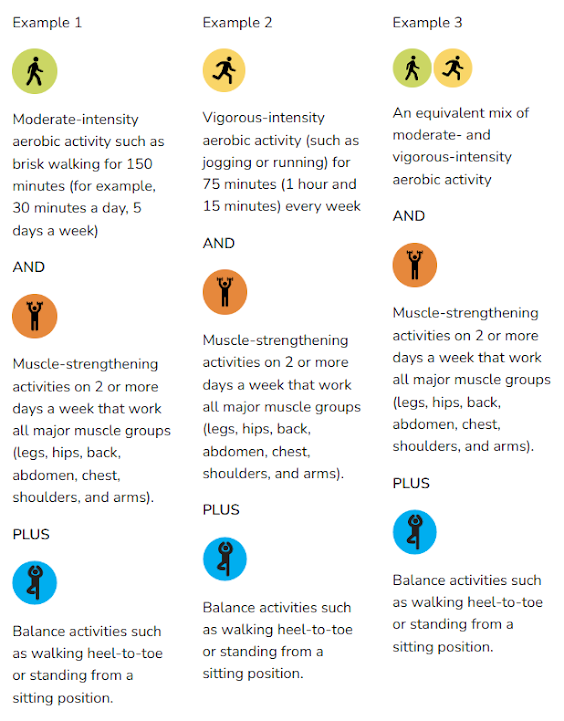How Physical Therapy Supports Healthy Aging in Older Adults
How Physical Therapy Supports Healthy Aging in Older Adults
Aging is a natural process, but it doesn't always mean a loss of independence or quality of life and it shouldn't. As a Kinesiology major with a Gerontology minor and an emphasis in Physical Therapy at San Diego State University, I’ve come to understand how important movement is in the aging process. Through my academic journey and personal experiences with physical therapy, I’ve developed an interest in how targeted rehabilitation and structured exercise can help older adults live longer, healthier, and more fulfilling lives.
Connection
My major focuses on the science of human movement, while my minor explores the biological, psychological, and social aspects of aging. Then my emphasis brings these two worlds together. I hope to become a physical therapist who specializes in working with older populations. Helping them recover from injuries, prevent future falls, manage chronic conditions, and stay active as they age.
This blog will serve as a space where I can reflect on what I’ve learned, explore current research, and share information. Aging impacts everyone, and I want to highlight ways we can support it with compassion, science, and movement. Because aging is NORMAL!
What the Research Tells Us
There is a lot of research showing how physical therapy helps older adults stay mobile and independent. For example, the Centers for Disease Control and Prevention (CDC) outlines the importance of movement for adults over 65. Physical activity improves balance, reduces the risk of falls, and supports mental health. This article specifically highlights the importance of incorporating different types of workouts during the week. I appreciated the infographic they included...
This infographic provides readers with a practical example of a workout regimen that may suit their individual needs, offering a range of intensities to help encourage more consistent daily physical activity. Because some exercise is better than none at all.This next article by National Institute on Aging offers multiple different articles based on what you are trying to search for. But they all emphasize strength training, balance exercises, and aerobic activity for older populations which are core components of most physical therapy programs. I appreciated the Exercising with Chronic Conditions because they went into depth about specific diseases and how exercise can still be incorporated, even if it's only "mini workouts" (NIH 4).
In addition to medical journals and government websites, many physical therapists and rehab clinics run blogs, YouTube channels, and social media accounts that educate people about aging and movement. These platforms make the information a little bit more accessible and relatable to those who need it most.
Why This Matters
Most people associate physical therapy with just injury recovery but it’s so much more than that, especially for older adults. Physical therapists assess strength, range of motion, balance, gait, and functional limitations. They build personalized exercise programs that help clients age safely and confidently.
Yet many people delay or avoid therapy because they don’t realize how beneficial it can be. By writing this blog, I hope to show the public how physical therapy can be used not just to treat illnesses or injuries, but to prevent decline in the first place!
If you’re a caregiver, an older adult yourself, or just someone who is curious about this topic, this information is relevant to you. Gerontology is not often talked about in school unless you are in a Gerontology course, and it's unfortunate. Aging is inevitable, but thriving as we age? That’s something worth exploring. The earlier we understand the importance of movement, the better prepared we are for long-term health.
Personal Connection
I’ve had personal experiences with physical therapy that made a lasting impression. After sustaining a sports-related injury when I was 11, I worked with a physical therapist to rebuild strength, reduce pain, and eventually get back to playing sports. That process inspired me to explore PT more seriously. Now, I want to help others benefit from the same kind of care.
In my coursework and volunteer experience, I’ve also seen firsthand how powerful PT can be for older adults and young adults. I’ve met individuals who went from using wheelchairs to walking unassisted, who regained confidence after a surgery, and who smiled after completing exercises they once thought impossible. These moments inspire me to become a PT someone can rely on in their most vulnerable times.
A Global and Local Issue
Physical therapy access for older adults is both a global and local issue. As populations around the world age the demand for PT is rising. In San Diego, we’re already seeing the need for more specialized providers who understand the needs of older patients. In rural or underserved areas, access may be even more limited due to transportation, cost, or lack of education about available services.
By advocating for physical therapy and educating the public, we can start to close these gaps. Whether that means supporting policy change, offering community-based movement programs, or simply starting a conversation, we all have a role to play. It can all start here in this blog.
Looking Ahead
In the coming weeks, I’ll be exploring related topics such as exercise and aging, ageism in healthcare, and barriers to accessing PT. My goal is to keep these conversations honest, evidence-based, and useful for readers both inside and outside the field. Please ask any questions you may have or any topics you might want to go over in the comments. I'd love your feedback.
Thanks for reading!






Comments
Post a Comment